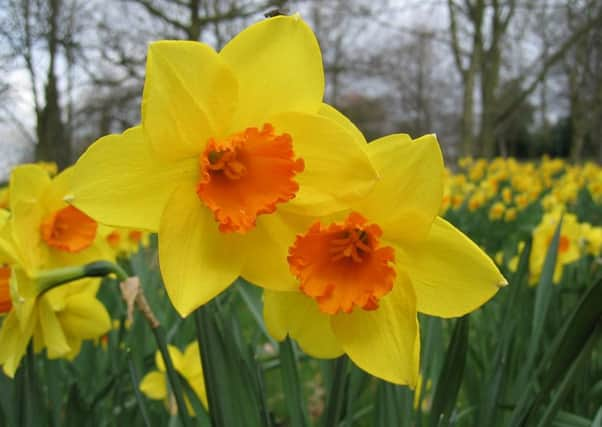Yellow is the predominant colour of vibrant new life in the country


‘All in an April Evening’ a choral composition resonating from my youth plumped in choir stalls perhaps summing it up. There are references in the refrain- burgeoning with pastoral imagery and natural energy, to sheep and lambs on the move to pastures new but it’s the feeling engendered of extended lighter evenings when one can venture out after tea, even out of town into the hill country where curlew are calling.
The grass is growing again, ‘dewy pastures are sweet’, an emerald sheen across bleached fields, the sward drying out and springy underfoot, blackthorn blossoming white and sycamore bursting with sticky green buds.
Advertisement
Hide AdAdvertisement
Hide AdYellow though is still the predominant colour especially in flora of vibrant new life seen in daffodils, primroses, saxifrage and celandines extending to banks of gorse and broom and forsythia in the garden.
Trees generally stand lifeless, palisade-like, leafless awaiting a surge in sap to mantle green.
Reports are coming in of chiff-chaff, blackcap, willow warbler and sand martin arriving from afar but have yet not displaced the incessant twitter of the numerous finches flocking- chaffinch, green and gold gathering at the top of trees in the garden prior to descending sporadically to the feeders.
It’s a time to get bird boxes up and generally tidy up the garden - which I’ve been doing burning in batches piles of decaying brushwood all the while hoping to find a resurgent hedgehog enlivened after hibernation. No such luck.
Advertisement
Hide AdAdvertisement
Hide AdIt’s a while since I’ve seen one. I do remember distinctly being privy to the amorous snuffling intentions of a pair in the garden late one evening causing quite a stir under some hollies. A sound loud enough to attraction attention and one’s curiosity!
Hedgehog numbers have plummeted drastically over the last few years. Some say a direct correlation between them and badgers which have multiplied and are cable of tackling them as part of their diet.
Roles reversal too on the roads has seen few squashed hedgehogs but increased badgers falling victim as road kill.
Tidy gardens, increased use of decking and chemicals have probably all added to the creatures’ demise by reducing possible food sources which include insects, slugs, snails, earthworms, frogs and carrion.
Advertisement
Hide AdAdvertisement
Hide AdFactor in the erection of continuous ‘barrier’ garden fencing (just including a five inch hole is all that’s required) even in leafy suburbs and the loss of hedgerows in the countryside then the drastically reduced habitat and roaming ground spells trouble.
Fortunately the skies contain no borders so we can expect our annual influx of migratory birds bringing that extra colour and song to our shores.